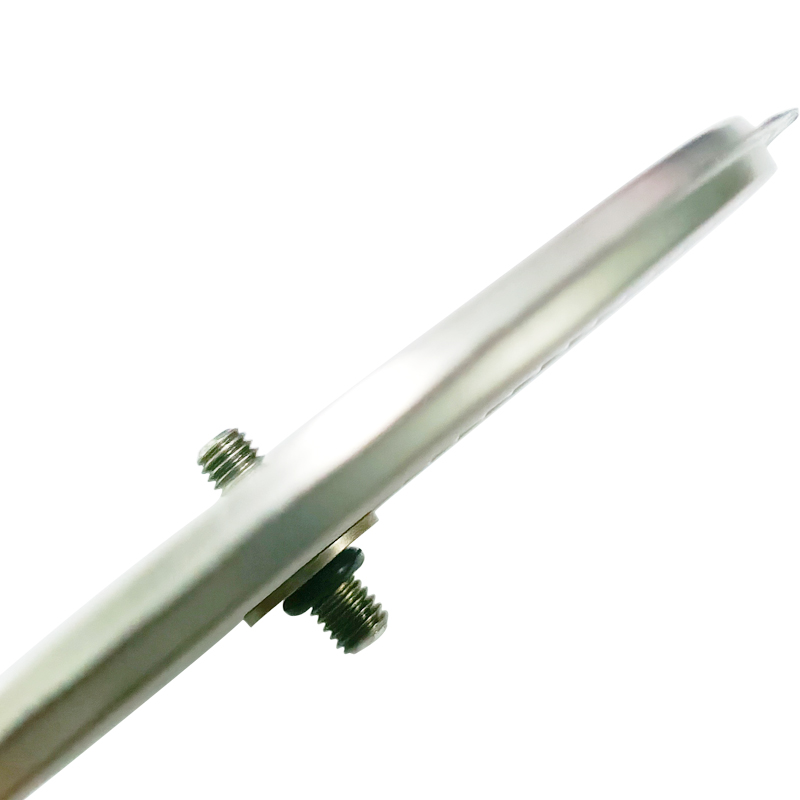
Июл . 26, 2024 03:29 Back to list
Factory Production of Bourdon Type Differential Pressure Gauges for Accurate Measurement Solutions
Understanding Bourdon Type Differential Pressure Gauges A Comprehensive Overview
Bourdon type differential pressure gauges are vital instruments used in various industries for measuring the pressure difference between two points in a system. Named after the French engineer Eugène Bourdon, who invented the device in 1849, these gauges are renowned for their simplicity, durability, and reliability.
The Structure and Working Principle
The Bourdon gauge operates on a straightforward yet effective mechanical principle. It consists of a curved, hollow tube (the Bourdon tube) that responds to pressure changes. The tube is typically made from materials such as brass, stainless steel, or other alloys, which assure longevity and resistance to corrosion.
When fluid enters the Bourdon tube, the pressure causes the tube to straighten slightly. This deformation is converted into rotary motion through a series of linkages and gears. The movement is then indicated on a dial, usually graduated in units of pressure (such as psi, bar, or pascal). The design allows for the accurate measurement of pressure differences even in high-pressure environments, making it suitable for various applications.
Applications of Differential Pressure Gauges
Differential pressure gauges are widely used in multiple sectors, including
1. Oil and Gas Industry Monitoring pressure differentials in pipelines is crucial for ensuring safe and efficient transportation of oil and gas. These gauges help detect leaks or blockages.
2. HVAC Systems In heating, ventilation, and air conditioning systems, differential pressure gauges are employed to measure the pressure drop across filters and heat exchangers, helping to maintain optimal airflow and system efficiency.
4. Pharmaceutical Manufacturing In sterile environments where processes must adhere to stringent standards, monitoring differential pressure ensures the integrity of contained environments and prevents contamination.
bourdon type differential pressure gauge factory

Advantages of Using Bourdon Type Differential Pressure Gauges
The popularity of Bourdon type gauges can be attributed to several key advantages
- Durability Built to withstand harsh conditions, these gauges can endure high pressures, making them suitable for both industrial and laboratory environments.
- Simplicity The mechanical design reduces the likelihood of failure as there are fewer electronic components that can malfunction.
- Cost-Effectiveness Compared to electronic pressure sensors, Bourdon gauges are often less expensive, making them an economical choice for many applications.
- Wide Range of Measurements They are available in various sizes and pressure ranges, ensuring that users can find a gauge that fits their specific needs.
Considerations and Limitations
While Bourdon type differential pressure gauges offer numerous benefits, there are a few considerations to keep in mind. For instance, they may not be as precise as electronic sensors, particularly in low-pressure applications. Additionally, they can be affected by temperature variations and mechanical vibrations that might lead to inaccuracies.
Conclusion
In summary, Bourdon type differential pressure gauges are indispensable tools in many industrial processes. Their robust construction and reliable performance make them ideal for applications ranging from oil and gas to water treatment and HVAC systems. By understanding their operation and advantages, industries can select the most suitable gauges for their needs, ultimately enhancing safety, efficiency, and reliability in their operations. As technology continues to evolve, the role of these traditional yet effective instruments remains significant in maintaining the integrity of various systems.
-
High-Precision 5 Valve Manifold Differential Pressure Gauge Suppliers
NewsApr.29,2025
-
High-Precision Diaphragm Vacuum Pressure Gauges Manufacturers & Quotes
NewsApr.29,2025
-
Omega Differential Pressure Gauges High Accuracy & Durability
NewsApr.28,2025
-
Low Pressure Differential Pressure Gauges Precision Solutions & Quotes
NewsApr.28,2025
-
Digital Diaphragm Pressure Gaauge Precision Measurement & OEM Quotes
NewsApr.28,2025
-
Differential Pressure Gauge China Price High-Accuracy & Best Quotes
NewsApr.28,2025
